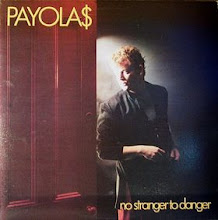 For the record, I never had any intention of turning reviews of Lon Chaney Jr./Universal Studio films into an ongoing series, much like I have never really had any specific plans for this site overall. But here I am again, this time looking at the film Calling Dr. Death (LeBorg 1943), and much like Man Made Monster (1941), Calling Dr. Death is not a particularly great film.
For the record, I never had any intention of turning reviews of Lon Chaney Jr./Universal Studio films into an ongoing series, much like I have never really had any specific plans for this site overall. But here I am again, this time looking at the film Calling Dr. Death (LeBorg 1943), and much like Man Made Monster (1941), Calling Dr. Death is not a particularly great film.That said, the film is a significant departure from the Chaney Jr./Universal films previously reviewed on the site, with Calling Dr. Death being a mystery rather than a horror film. The film is based on the radio series Inner Sanctum Mysteries which ran from 1941-1952, featuring stories of murder, horror and suspense. Coincidentally enough, I listened to an episode of the series a month or two ago, and the program certainly has its charms, with a spooky-but-campy atmosphere, and some fun host banter to bookend the episode. Unfortunately, none of those charms are on display in Calling Dr. Death. The film is a straightforward mystery, directed by Reginald LeBorg in a perfunctory manner from a screenplay by Edward Dein.
 The film concerns psychologist Dr. Mark Steel (Chaney Jr.), a man trapped in a loveless marriage to a woman who is openly having affairs with other men while refusing Steel a divorce. Steel’s frustrations are only exacerbated by the romantic feelings shared between him and his nurse Stella (Patricia Morison), who is seemingly his only confidant. One weekend, Mark discovers his wife has taken off, and he heads out to find her. When he wakes up in his office Monday morning, he discovers that he has no memory of the weekend, and that his wife has been brutally murdered. While his wife’s lover is the prime suspect, Mark is convinced of the man’s innocence, because Steel is convinced that he himself is the murderer. With no evidence however, Steel sets about trying to solve the crime and save the man, even if it means revealing himself as the killer in the process.
The film concerns psychologist Dr. Mark Steel (Chaney Jr.), a man trapped in a loveless marriage to a woman who is openly having affairs with other men while refusing Steel a divorce. Steel’s frustrations are only exacerbated by the romantic feelings shared between him and his nurse Stella (Patricia Morison), who is seemingly his only confidant. One weekend, Mark discovers his wife has taken off, and he heads out to find her. When he wakes up in his office Monday morning, he discovers that he has no memory of the weekend, and that his wife has been brutally murdered. While his wife’s lover is the prime suspect, Mark is convinced of the man’s innocence, because Steel is convinced that he himself is the murderer. With no evidence however, Steel sets about trying to solve the crime and save the man, even if it means revealing himself as the killer in the process.There is nothing about Calling Dr. Death that is particularly interesting, including its failings, which are little more than the typical problems with most murder mysteries, from an easily deduced killer, to giant plot holes and lapses in logic. If the film has a problem that is particular to itself, it is the use of voice over to convey the “voices” in Mark’s head. Along with being overused, the voice over never successfully conveys the idea that Mark is suffering from any form of psychosis, as the bulk of it is little more than Mark moaning on about how pathetic he is. He may be slightly depressed, but there is never any indication from the voice over that Mark is truly suffering from any serious mental issues.

If there is anything fascinating in the film at all, it is mainly the work of star Lon Chaney Jr., who continues to astound me as I work my way through his films for having a star image that is completely defined by weakness. In every film I have watched Chaney Jr. in thus far, the characters he has played have been essentially powerless men, unable to take action and constantly at the mercy of others. As Mark Steel, we see Chaney Jr. playing the weakest character I have seen him take on yet, accomplishing little and being attacked from all sides. Unfortunately, this does not make for a particularly fascinating character, and since there is no doubt from the beginning as to whether or not Mark is or is not guilty, it is impossible to care about anything that happens over the course of the film.
Calling Dr. Death is only available as part of the “Inner Sanctum Mysteries” DVD collection from Universal, the remaining films of which I have yet to review. On its own, I cannot recommend the film as a worthwhile dip into the Universal catalogue, and as a start to the series, Calling Dr. Death does not hold out much promise for the rest of the films to come. Still, with five more films to go, we shall see if the “Inner Sanctum Mysteries” film series improves, and has any cinematic value as a whole.


No comments:
Post a Comment
What Is Your Cinematic Experience? Post Here!